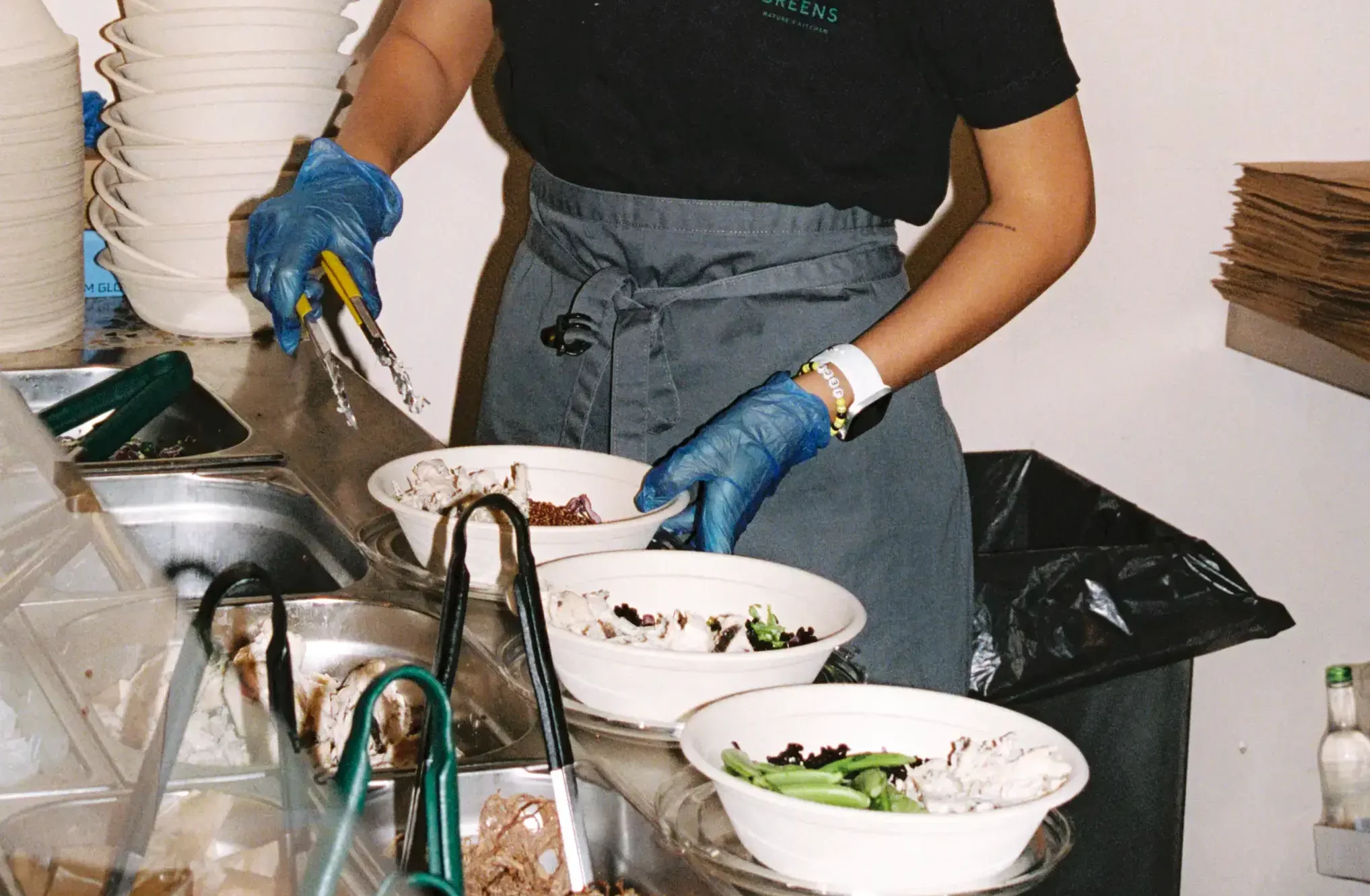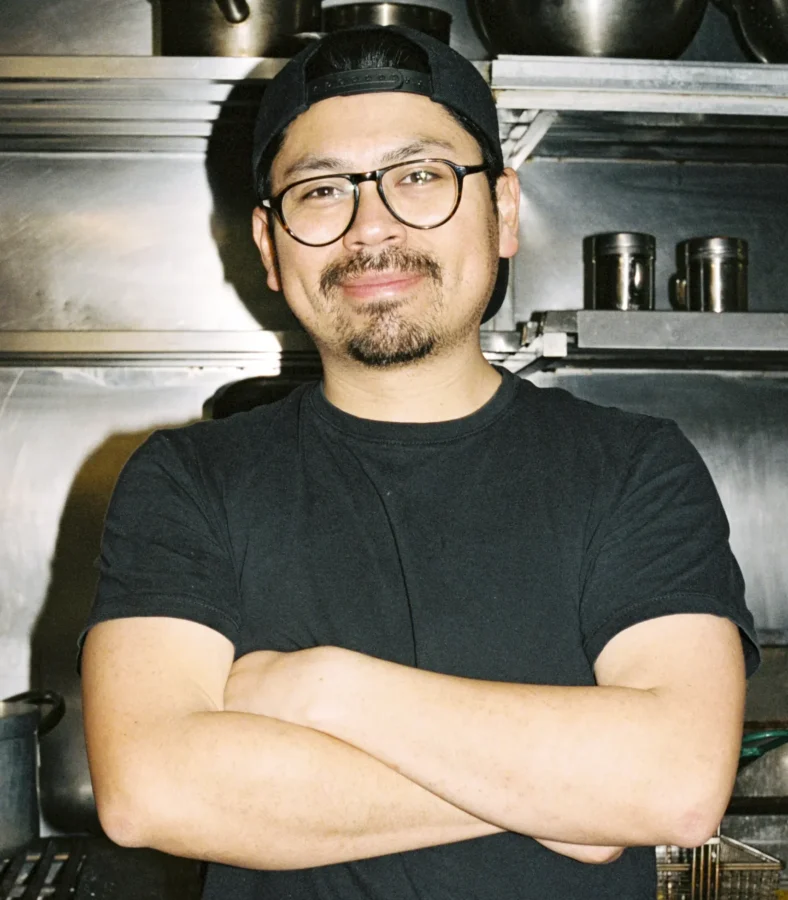The title is a tad dramatic right? Well unfortunately not. I could have written hundreds of thousands of dollars a year (if you’re operating a 10+ location restaurant group) and still been on the short side. It’s no secret that margins are tight in the food game, but common mis-steps are taking huge bites out of your potential profitability.
This guide is a simple and effective cheat sheet to help you stop burning those dollar bills and fatten up your margins.
TL;DR – here’s how it’s done:
- Build a menu for scale and consistency ️
- Cost your damn menu properly
- Invest in integrated technology solutions
- Your processes control your waste ️
- Keep it light, keep it juicy
1. Build a menu for scale and consistency
Every restaurateur dreams of launching a business that is successful. So successful that you are forced to open up locations nationwide or internationally to service the ever growing demand.
But to turn this pipe dream into a reality, you need to nail, and scale a consistently awesome product experience.
And it starts with your menu:
- Go small or go home: A tight menu shows confidence in your product quality. It also unlocks operational benefits that will help fatten up those skimpy margins.
- Economies of purchasing: Vendor negotiating 101 – if you are buying hundreds or thousands of cases of a single inventory line each week, then you have a strong bargaining position. Anchor your menu off a handful of interchangeable ingredients and you immediately give your business ongoing leverage to buy cheaper.
- Product consistency: What’s the most important ingredient to a successful restaurant?
Consistency – without a doubt. You may have an awesome product and dining experience but if you only deliver on them 70% of the time, then you are on a lonely road to nowhere.
With a smaller menu you can better train your kitchen teams to prepare your product consistently at scale.
Meaning when they are busy AF at peak times –> they aren’t grappling to make 15 different dishes at once –> making portioning or process mistakes –> leading to higher food waste and slower table turns –> and you guessed it smaller margins!
Instead with a tight menu, your team will learn to prepare the menu correctly at pace –> ensuring you have consistent experience and unit economics per dish (GP%) –> increasing your throughput and sales potential –> A delicious cycle .
2. Cost the damn thing properly
Sounds easy right? Well you would be surprised…
I’m not going to walk through an example GP% equation here because if you’re reading this then you’re better than that. But if you need a quick refresher check it out here.
Don’t cost in isolation
You need to factor in the rest of your cost base and your target net profit %. Work back up your projected P&L’s to your food and beverage cost not the other way around.
What are your fixed costs – 20%, loaded labour costs – 30%, remaining variable costs like light/heat, repairs and marketing etc – 15%. You have 35% to play with – don’t price your menu at a 30% COGS and sh*t the bed when your 5% net profit becomes 1.5% with waste fluctuations factored in.
Be honest on portion sizes
Don’t go light on paper if it’s not realistic to the product in service. This happens a hell of a lot. You offer 25gms of sauce as an extra dip to get a 95% GP. But you won’t, you’ll actually give the customer 40 or 50gms because 25gms looks weak AF, but you’ve priced for 25gms so your GP% tracking is all over the place.
Costing is a continuous process
Vendors change prices as often as babies change nappies. So get yourself a decent bit of tech that updates price changes on delivery acceptance and tracks the fluctuation in pricing. You need to see changes in gross profit in real-time and a clear view on what vendors are taking the p*ss.
3. Invest in integrated technology solutions
Invest in integrated technology solutions – i.e. an inventory management + forecasting solution that is connected with your POS. It’s by far the most effective way to control the flow of data in your business. From an ROI perspective, it’s a no brainer too and here’s why:
Let’s assume your brand operates 20 locations with an average per location turnover of $1,000,000.
Let’s also assume you have 1% accounted waste and 1.5% un-accounted waste – so 2.5%.
2.5% of $20,000,000 is $500,000.
A POS integrated forecasting and inventory product (like Nory ) might set you back $300 per location per month. That’s $72,000 a year.
If a solution can reduce your waste by only 0.14% to 2.36% then it’s a net positive for your business.
Implemented properly you should be looking at 5x that or over $300,000 in savings in Year 1.
This is before you add in the reduced human effort (cost) involved in effective inventory management – forecasting, setting par levels, ordering, waste tracking and reporting – every week multiplied by every location.
If a tech solution can automate even a portion of those activities it’s an absolute game changer in terms of time and money earned.
Get on it.
4. Your processes control your waste
Wait a minute… Didn’t you say we won’t have any waste after implementing this cheat sheet?! Unfortunately, some element of waste in a restaurant is inevitable. BUT to control your waste you need to follow a set bullet proof processes:
Forecast item sales / usage
The first step in reducing waste is to forecast itemised sales accurately. Invest in a product that will automatically predict demand for each location at the item level.
Why is this important?
Automating your forecasts based on an AI or machine learning model will ensure that forecasts are pulling in the most relevant and up to date data for predicting itemised sales. These models will analyse historical patterns of days in a week and even dayparts. The likelihood your team or back office will nail this week in week out is slim and is also a time suck.
Make prep lists data led
Daily prep lists should be based on data not intuition. Once you have your forecasts connected with your inventory solution you can create automated prep lists for your kitchen teams.
Predicted item sales for today (or x days depending on use of batch recipes) – raw + prepped inventory at hand = kitchen prep list.
This will not only focus kitchen efforts but also feeds into your scheduling – you have the prep list, you know the time required to prepare each recipe…
You see where this is going…
Track waste daily (and make it easy)
Whether it’s a whiteboard, a discount label on your POS or directly into your inventory system. Make sure it’s easy to track waste every day.
Context when scrutinising waste is hugely important to control it; when did it occur and why? Was it at a time of high volume or low volume, were your staffing levels on point? These questions matter.
You need to see if it’s a systemic or systematic problem.
Set up a weekly waste leaderboard
Gamify it. Put waste leaderboards in each location and launch an inter-brand competition. Everyone wants to be #1, so make it competitive and reward the best performing teams. It works.
Automate reporting
So you’ve got solid processes in each location, now you need to know how they are doing on a continuous basis. As per most things in this section, automate it. Set up triggers in your inventory system; once closing counts are done – you receive a full report of each location’s performance broken down into cohorts.
Who’s over/under GP? Who’s waste was the highest/lowest and why? Get a one pager on your brand and pull on the threads from there.
Automating the data collection means the reporting will be accurate, consistent and scalable. It’s ok having an ops team member cascading data at 5 locations – try it at 50 – that’s an expensive waste of time.
5. Keep it light, keep it juicy
I hope by this point in the guide you have some clear action points to better control your margins and profitability at scale. But to make sure this isn’t some weak initiative that dis-appears next quarter, lean on these principles to rally your organisation behind the change:
- Bring the team into the WHY: Effective change management is a team sport. Bring in the leadership teams across your HQ and restaurant locations.
Discuss the WHY behind the change, show them where the businesses could go with this potential performance improvement.
1% –> 2% –> 5% changes in Gross Profit multiplied by each location unlocks a very different growth journey.
Once everyone is aligned then the likelihood of it sticking is exponentially better. - Set collaboratives targets: Work with your managers and operating teams to be transparent in target setting.
Work out what’s really achievable together and go after it. - Automate the busy work: If it’s painful to do, it won’t be done: I won’t rehash the last section of the guide. You know this yourself.
- 80/20 for impact: Where can the biggest impact be made? Start narrow. No doubt there are 1 or 2 key waste lines or inconsistent operational processes that have the biggest negative impact on your margins.
Start there and control them – then move on. - Keep it light, keep it juicy: Last but not least – It takes a team to get to the top (and stay there). Make change engaging and competitive. Make sure to reward and recognise those who make the effort to drive improvements in your business.
There we have it! Nory’s Gross Profit Cheat Sheet; part data, part processes and a whole lotta people.
Book a chat with the team to get the ball rolling!
Frequently Asked Questions (FAQs)
What is gross profit in the restaurant industry?
Gross profit in the restaurant industry refers to the revenue remaining after deducting the cost of goods sold (COGS) from total sales. It’s a key indicator of how efficiently a restaurant manages its primary business activities and menu costing.
How can I calculate my restaurant’s gross profit margin?
Calculate your gross profit margin by subtracting the COGS from your total sales, then divide that number by total sales, and multiply by 100 to get a percentage. This figure shows the proportion of revenue that exceeds the costs of producing your menu items.
Why is optimising my menu important for improving gross profit?
Optimising your menu can significantly impact your gross profit by reducing waste, improving buying power through vendor negotiations, and ensuring that each menu item contributes positively to your bottom line. A focused menu allows for better cost control and operational efficiency.
How does technology integration help increase gross profit?
Integrated technology solutions, like inventory management systems connected to your POS, streamline operations, reduce waste, and improve forecasting accuracy. This leads to more informed purchasing decisions, better stock control, and ultimately, higher gross profit margins.
Can making changes to my restaurant’s processes really impact my gross profit?
Absolutely. Implementing solid processes for forecasting, prep, and waste management can lead to significant improvements in operational efficiency. By controlling waste and ensuring consistent product quality, restaurants can improve gross profit margins while maintaining high customer satisfaction levels.

